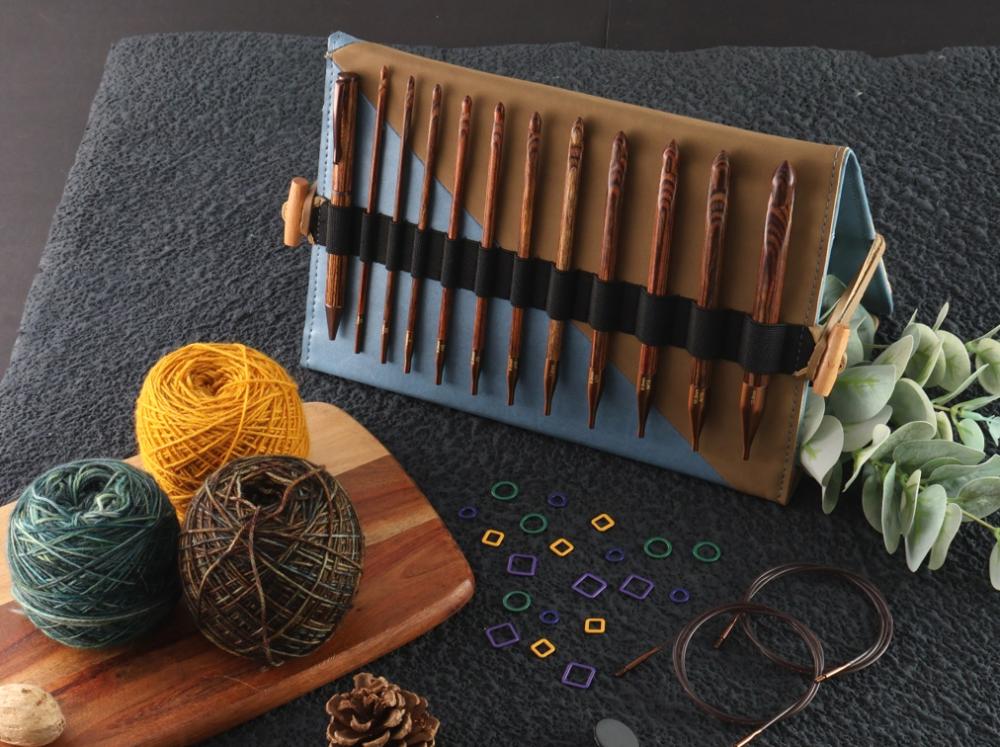Yarn looping, a cornerstone technique in fiber arts, serves as the foundation for numerous textile crafts, including crochet, knitting, rug hooking, and weaving. It involves creating consistent loops of yarn to form patterns, textures, and structures. This art has evolved from traditional methods into a modern craft, embraced by enthusiasts worldwide. In this detailed guide, we cover everything from basic loop techniques to advanced applications in creative projects.
Understanding the Fundamentals of Yarn Looping
Yarn looping, at its core, is the manipulation of yarn into loops to build patterns or fabric. This process may be done with tools like hooks, needles, or by hand.
Types of Yarn Loops
Slip Loop: The foundational loop in crochet and knitting. Easy to create and adjust in size.
Chain Loop: A series of connected slip loops used in crochet to form the base chain.
Magic Loop: Used in knitting for circular items, allowing small diameter work with long circular needles.
Latch Hook Loop: Common in rug making, this loop secures yarn through canvas grids.
Mastery of these loop types enables the execution of complex designs and seamless projects.
Essential Tools for Yarn Looping
While some techniques can be done by hand, specific tools enhance efficiency and precision.
Basic Tools
Crochet Hook: Comes in various sizes and materials, used to pull yarn through loops.
Knitting Needles: Straight, circular, or double-pointed, designed to hold and manipulate stitches.
Latch Hook Tool: Has a hinged hook for pulling yarn through canvas.
Yarn Needle: For weaving in ends and joining pieces.
Supportive Materials
Yarn Types: Wool, acrylic, cotton – each offers different texture and tension.
Rug Canvas or Loops Looms: Provide structure for looping techniques like locker hooking or weaving.
Proper tools and materials significantly affect the quality and durability of finished projects.
Looping Techniques for Different Crafts
Crochet Looping
Crochet relies heavily on looping to build fabric. Each stitch is a variation of yarn loops worked through previous stitches.
Basic Crochet Loops:
Chain stitch (ch)
Single crochet (sc)
Double crochet (dc)
Treble crochet (tr)
Advanced Loops:
Loop stitch: Adds textured loops for tactile effects.
Popcorn and puff stitches: Create dimensional surfaces.
Crochet allows immense freedom in shaping, sizing, and designing, all based on strategic looping.
Knitting with Yarn Loops
Knitting involves creating a series of interlocking loops on needles. There are two primary loop types:
Knit Stitch: Yarn loop pulled through a previous loop from front to back.
Purl Stitch: Yarn loop pulled from back to front.
Special Loop Techniques:
Yarn over (yo): Introduces deliberate holes, useful for lace patterns.
Loop increase/decrease: Adjusts fabric width.
Loop control is critical for maintaining gauge and ensuring even fabric tension.
Rug Making with Looping Techniques
Latch Hooking and Punch Needle Rug Making are popular forms of yarn looping used to create textured and colorful rugs.
Latch Hooking: Short yarn segments are pulled through a mesh canvas and knotted.
Punch Needle: A hollow needle punches loops of yarn through fabric, forming plush surfaces.
These methods emphasize loop consistency and yarn tension for professional finishes.
Loop Weaving
Loop weaving on peg looms or with finger techniques creates functional items like potholders, placemats, and wall hangings.
Popular Loop Weaving Patterns:
Checkerboard
Diagonal weave
Striped and gradient color designs
Loops must be uniform to maintain structural integrity and visual appeal.
Creative Projects Using Yarn Looping
Yarn looping isn’t limited to standard crafts. It supports a wide range of artistic and functional projects.
1. Loop Stitch Pillows
Create decorative pillows with raised loop textures using loop or popcorn stitch crochet.
2. Loop Wall Hangings
Use loop weaving or punch needle techniques to build modern fiber art for interior décor.
3. Loop Rugs
Latch hook rugs with colorful yarn loops add personality to dorms, nurseries, or entryways.
4. Loop Hats and Scarves
Circular knitting and crochet loops are used to create warm, fashionable accessories with chunky yarn.
5. Amigurumi and Plush Toys
Tight loop control in crochet allows for detailed soft sculptures and toys.
These projects showcase the versatility and appeal of yarn looping across skill levels.
Troubleshooting Common Yarn Looping Mistakes
Uneven Loops
Cause: Inconsistent tension or hook size mismatch
Fix: Practice consistent hand tension, switch to ergonomic tools
Dropped Loops
Cause: Losing grip or skipping a stitch
Fix: Use stitch markers, slow down and count loops regularly
Tangled Yarn
Cause: Poor yarn storage or pulling from the wrong end
Fix: Use a yarn bowl or center-pull skeins, wind your own cakes
Proper technique and practice resolve most issues quickly and improve overall craft quality.
Tips to Improve Your Yarn Looping Skills
Practice regularly: Build muscle memory and loop consistency.
Watch tutorials: Visual guidance aids in mastering loop techniques.
Join online communities: Learn from experienced crafters, ask questions, and get feedback.
Experiment with yarn types: Understand how fiber affects loop behavior and final appearance.
Use light-colored yarns to start: Easier to see individual loops when learning.
Developing precision in yarn looping elevates your projects from homemade to handcrafted excellence.
Advanced Techniques in Yarn Looping
Overlay Crochet
Uses contrasting yarn colors to create layered designs with looped stitchwork.
Double Knitting
Involves looping two fabrics at once, producing reversible designs.
Looped Cables and Textures
Advanced knitters create intricate cable designs using loop arrangements and stitch crossings.
Loop Embellishments
Integrate beads or secondary threads into loops for decorative effects.
These techniques push the boundaries of traditional yarn looping and allow for personalized, standout projects.
Conclusion: The Endless Possibilities of Yarn Looping
Yarn looping, though rooted in traditional crafts, remains an innovative and dynamic technique. From simple scarves to complex wall art, mastering loops unlocks unlimited creative potential. Whether you’re crocheting a blanket, knitting a sweater, or crafting a handmade rug, it all starts with the humble yarn loop.



















